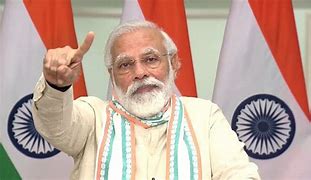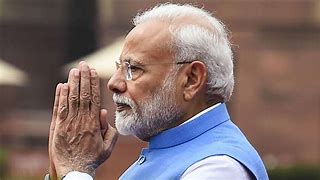Feature
Giant indoor stadium set to host mega Africa summit

New Delhi: With New Delhi set to host 54 African heads of state and government and their large entourages this October, a giant indoor stadium built for the Asian Games in 1982 will play host to this grand conclave.
According to top officials dealing with the preparations, Prime Minister Narendra Modi himself is pretty much happy with the venue after he launched his pet “Digital India Week” here earlier this month at the the capacious Indira Gandhi Indoor Stadium attended by Who’s Who of India Inc.
The Third India-Africa Forum Summit is also set to be the largest gathering of foreign leaders in India since the Non-Aligned Summit here in 1983 and the Commonwealth Heads of Government Summit the same year and officials feel the venue so chosen is the best suited for such a gathering, from the organisation and security points of view.
“This stadium is spread over 100 acres. It is centrally air-conditioned and has a floor area of around 18,000 sq mts and comfortably seat 15,000 people and even more,” an official deputed for the arrangements told IANS, but requested anonymity as he was not authorised to speak.
“There is also this proposal to erect a large stage inside the stadium on which our prime minister and all the African leaders will be able to comfortably stand together in a semi-circle for the customary photo-opp,” the official added.
Below the stage, separate desks for each African head and behind that chairs will seat delegation members. Finally behind these high-ranking ministers and officials, provisions would be made for the accompanying staff, the official said.
“The Ministry of External Affairs is looking at seven-eight delegates from each country.”
Named after former prime minister Indira Gandhi, it is the largest indoor sports arena in India, built by the Indian government for the Asian Games in 1982. It was renovated for the 2010 Commonwealth Games, especially with a new velodrome and airconditioning.
According to knowledgeable sources, the logistics has already been taken care of since the Communications and IT Ministry had started working for that a forenight before the “Digital India Week” and that event was held without any major glitch.
“We wanted it to be a world class programme,” Communications and IT Minister Ravi Shankar Prasad had remarked after the “Digital Inia Week” launch, adding the entire team had burnt midnight oil to ensure its success. “It was a mamoth task, no doubt.”
Sources said the event also served as a dress rehersal for the big international event, from the logistical and security perspectives.
“There was a multi-layered security. First two layers were covered by the Special Protection Group, which protects prime ministers,” said Deputy Commissioner of Police (Central Range), Parmaditya, who uses only one name.
“The third layer was covered by prime minister’s other security, while the fourth was handled by our Delhi Police personnel. For the outer security, I was myself present with top officers. We had also deployed the Delhi Traffic Police to oversee the parking,” Parmaditya told IANS.
Another Delhi Police official said on the condition of anonymity that the information to arrange a tight and multi-layer security at the stadium was shared with around 10 days before the event.
“Our special commissioner of police for law and order (Deepak Mishra) was himself monitoring all the arrangements along with two joint commissioners and three deputy commissioner,” the official said.
Asked if similar arrangements will be made for the upcoming India-Africa Summit, Parmaditya said: “I am not yet aware about the summit. But, we are ready to handle it with ease if it is being held at the Indira Gandhi Indoor Stadium.”
The search for a suitable venue ended at the IGIS after all the five-star hotels in the National Capital Region were rejected because none of their halls could accomodate so many leaders and their delegations at one time.
Even the Vigyan Bhavan, which was built in 1956 and has been in the past the venue of international conferences, was found inadequate this time due to heightened security and logistical requirements of current times.
Entertainment
Meghalaya Reserves Legalized Gambling and Sports Betting for Tourists

The State Scores Extra High on Gaming-Friendly Industry Index
Meghalaya scored 92.85 out of 100 possible points in a Gaming Industry Index and proved to be India’s most gaming-friendly state following its recent profound legislation changes over the field allowing land-based and online gaming, including games of chance, under a licensing regime.
The index by the UK India Business Council (UKIBC) uses a scale of 0 to 100 to measure the level of legalisation on gambling and betting achieved by a state based on the scores over a set of seven different games – lottery, horse racing, betting on sports, poker, rummy, casino and fantasy sports
Starting from February last year, Meghalaya became the third state in India’s northeast to legalise gambling and betting after Sikkim and Nagaland. After consultations with the UKIBC, the state proceeded with the adoption of the Meghalaya Regulation of Gaming Act, 2021 and the nullification of the Meghalaya Prevention of Gambling Act, 1970. Subsequently in December, the Meghalaya Regulation of Gaming Rules, 2021 were notified and came into force.
All for the Tourists
The move to legalise and license various forms of offline and online betting and gambling in Meghalaya is aimed at boosting tourism and creating jobs, and altogether raising taxation revenues for the northeastern state. At the same time, the opportunities to bet and gamble legally will be reserved only for tourists and visitors.
“We came out with a Gaming Act and subsequently framed the Regulation of Gaming Rules, 2021. The government will accordingly issue licenses to operate games of skill and chance, both online and offline,” said James P. K. Sangma, Meghalaya State Law and Taxation Minister speaking in the capital city of Shillong. “But the legalized gambling and gaming will only be for tourists and not residents of Meghalaya,” he continued.
To be allowed to play, tourists and people visiting the state for work or business purposes will have to prove their non-resident status by presenting appropriate documents, in a process similar to a bank KYC (Know Your Customer) procedure.
Meghalaya Reaches Out to a Vast Market
With 140 millions of people in India estimated to bet regularly on sports, and a total of 370 million desi bettors around prominent sporting events, as per data from one of the latest reports by Esse N Videri, Meghalaya is set to reach out and take a piece of a vast market.
Estimates on the financial value of India’s sports betting market, combined across all types of offline channels and online sports and cricket predictions and betting platforms, speak about amounts between $130 and $150 billion (roughly between ₹9.7 and ₹11.5 lakh crore).
Andhra Pradesh, Telangana and Delhi are shown to deliver the highest number of bettors and Meghalaya can count on substantial tourists flow from their betting circles. The sports betting communities of Karnataka, Maharashtra, Uttar Pradesh and Haryana are also not to be underestimated.
Among the sports, cricket is most popular, registering 68 percent of the total bet count analyzed by Esse N Videri. Football takes second position with 11 percent of the bets, followed by betting on FIFA at 7 percent and on eCricket at 5 percent. The last position in the Top 5 of popular sports for betting in India is taken by tennis with 3 percent of the bet count.
Local Citizens will Still have Their Teer Betting
Meghalaya residents will still be permitted to participate in teer betting over arrow-shooting results. Teer is a traditional method of gambling, somewhat similar to a lottery draw, and held under the rules of the Meghalaya Regulation of the Game of Arrow Shooting and the Sale of Teer Tickets Act, 2018.
Teer includes bettors wagering on the number of arrows that reach the target which is placed about 50 meters away from a team of 20 archers positioned in a semicircle.
The archers shoot volleys of arrows at the target for ten minutes, and players place their bets choosing a number between 0 and 99 trying to guess the last two digits of the number of arrows that successfully pierce the target.
If, for example, the number of hits is 256, anyone who has bet on 56 wins an amount eight times bigger than their wager.























